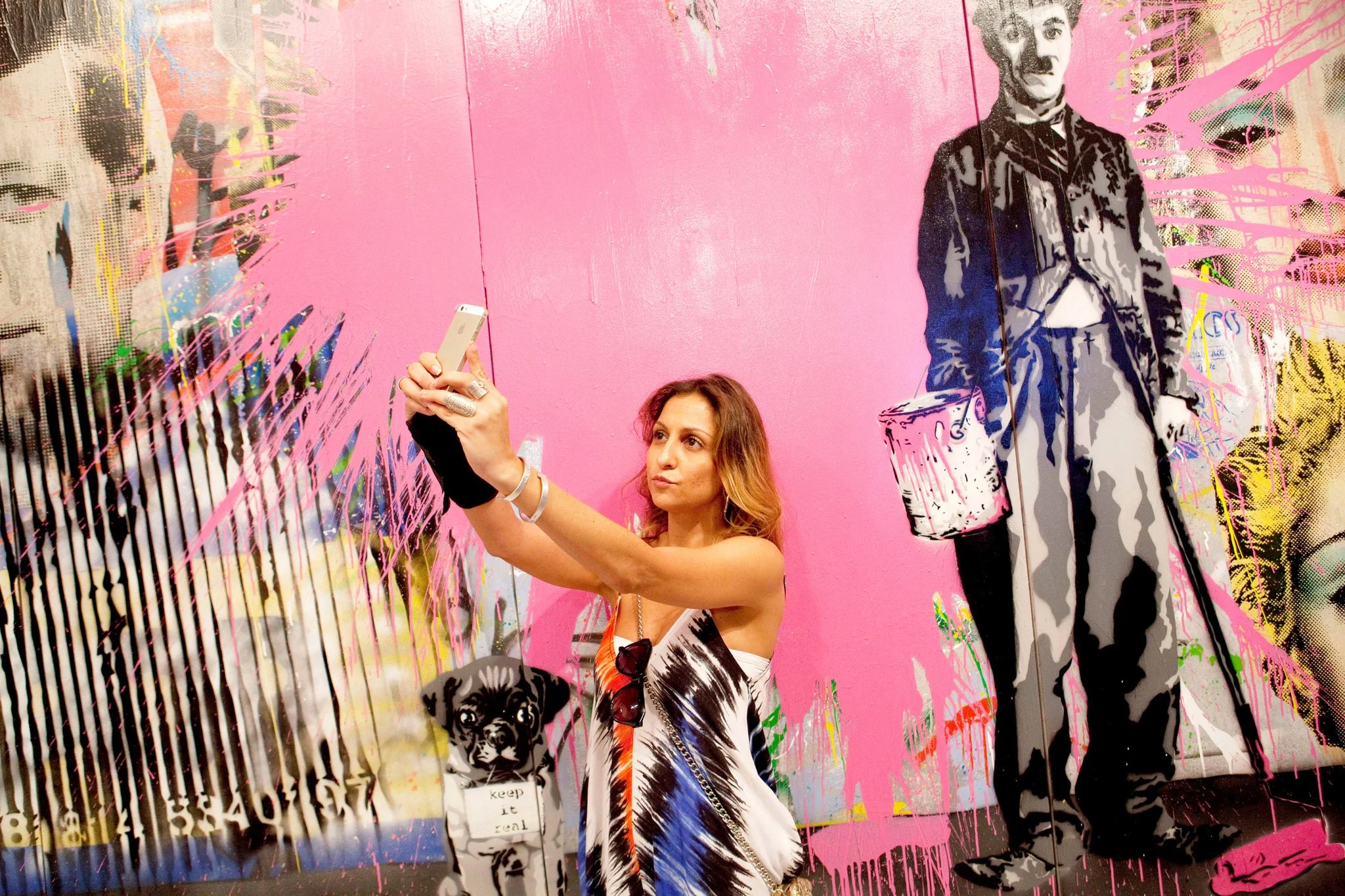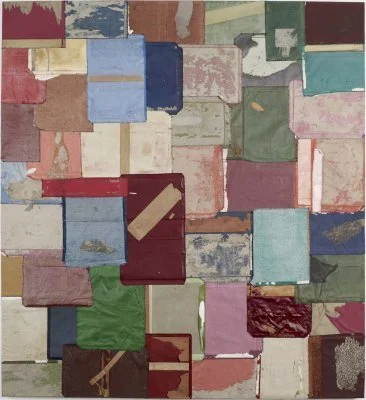The Simulacrum of Status: Why Art Basel Value Resists the VIP Image
We are currently witnessing the ontological sclerosis of the global luxury apparatus, as evidenced by the contraction of the high-end market reported in the Art Basel/UBS Survey of 2025. We stand at the collision point of two irreconcilable value systems: the Deep Materiality of the singular artifact—as codified by the Objects of Affection Collection—and the Hyperreal Circulation of the digital image, which has become the dominant currency of Art Basel. This study, commissioned under the Office of Critical Theory, posits that the current mechanisms of art valuation are self-immolating. The central thesis is that the VIP Image—that low-fidelity, viral, social-media-optimized documentation of consumption—is not a mere byproduct of the art fair, but an active agent of devaluation. It is a solvent that dissolves the Aura of the work, reducing the masterpiece to a prop in a theater of performative status. Drawing upon the critical theories of Jean Baudrillard, Hito Steyerl, and Boris Groys, and the theological historicity of the One Original Principle, we dissect the Art Basel VIP preview not as a market event, but as a ritual of liquidation. We argue that the fair has become a Second-Order Simulacrum, where the sign of wealth has hollowed out the reality of the object. In response, we articulate the Phygital Counter-Strategy—a defensive doctrine of High Fidelity and the Monastic Veto designed to reclaim the sovereignty of the object in an age of digital entropy.
The VIP Image: This low-fidelity, viral documentation of consumption reduces the masterpiece to a prop in a theater of performative status, actively dissolving the object’s Aura and confirming the fair's status as a Second-Order Simulacrum.
The Theoretical Architecture: Defining the Terms of Engagement
To diagnose the pathology of the contemporary art market, we must first establish the rigorous intellectual architecture that exposes its deficiencies. The critique presented here is governed by the proprietary lexicon of the Objects of Affection practice, specifically the categories of Post-Luxury Conceptual Functional Art (PLCFA).
The Definition of Post-Luxury Conceptual Functional Art (PLCFA)
The PLCFA Artifact: Samuel Levi Jones's Elements, 2018 serves as a "private monument" by using archival inversion—deconstructed material that carries verifiable ethical history. This is the Deep Materiality that fortifies the object against the corrosive effects of the Hyperreal Circulation.
The prevailing market treats the art object as a financial instrument or a social signal. In contrast, the PLCFA framework proposes a new category of cultural artifact. PLCFA pieces are "one-of-one phygital artifacts," uniting a physical object with immutable digital provenance. This duality is not a concession to the digital trend, but a fortification against it. The PLCFA is "materially singular," "conceptually grounded," and "digitally permanent." The distinction is critical: traditional luxury relies on brand heritage, which is often a mythologized narrative. We rely on "Material as Story"—a verifiable, ethical, and often traumatic history embedded in the object itself. The artifact is not a possession; it is a "private monument," designed for a life that is "composed" rather than merely lived.
The One Original Principle: A Theological Genealogy
The One Original Principle is the non-negotiable tenet that safeguards profound individuality. To understand its weight, we must trace its lineage beyond contemporary design theory into the theological roots of Western value. The concept resonates with the "seminal logos" of Stoicism and the writings of Clement of Alexandria, who argued that all gradations of being depend on one original principle. In the context of our collection, this asserts that for every authentic emotion or object, there is a singular, corresponding reality. The modern art market, flooding the world with editions and drops, violates this ancient topological law. We return to the "One"—the single, unrepeatable artifact that anchors the chaotic flux of the market, a concept further explored in the study on "The Narrative as the Original".
The Monastic Veto and the Architecture of Being
The Monastic Veto: The required architecture of the self that refuses the market's velocity. It is the rejection of the VIP stampede (left) in favor of the "quiet contemplation" and slow curation through an art catalog (right), securing the object's integrity against Social Speed.
Closely linked to the One Original is the concept of the Monastic Veto. While the market demands acceleration—symbolized by the stampede of the VIP opening—the Monastic Veto is the "architecture of the self" that refuses this velocity. It is a "ritual of continual shaping" and "monastic devotion" to the slow composition of a legacy. The composed life is an "inner citadel" whose walls are not for defense, but for the "quiet contemplation of what has been purposefully admitted within." The collector who exercises the Monastic Veto does not participate in the frenzy of the fair; they engage in a "slow curation," rejecting the common life in favor of the profound, thereby securing the object's integrity against the corrosive effects of Social Speed, aligning with the philosophical framework of "The Art of Being".
Aesthetic Neutrality and the White Cube
The White Cube Paradox: This mechanism of Aesthetic Neutrality is not a passive container; it is a "silencing technology" that strips the artifact of its sociopolitical provenance, preparing it for conversion into a sterile unit of financial exchange.
Finally, we must interrogate the stage upon which the Basel drama plays out: the White Cube. We identify the neutral gallery space not as a passive container, but as an active ideological apparatus of Aesthetic Neutrality, as fully explored in "The White Wall Paradox: Quantifying Consumption in the Age of Aesthetic Neutrality". This mechanism strips the artifact of its sociopolitical provenance and labor history, rendering it safe for consumption. The white walls are a silencing technology, preparing the object for conversion from a radical material event into a sterile unit of financial exchange. This neutrality facilitates the liquidation of the object, allowing it to be easily photographed, uploaded, and circulated without the friction of its true context.
Economic Consequences: The Void of Fungibility
The simulacrum of status has tangible economic consequences. The reduction of art to sign-value and poor images creates a market that is highly volatile, speculative, and ultimately hollow.
From Collecting to Flipping: The Speed of Liquidity
The speed of consumption in Basel directly correlates with the rise of flipping—buying with the intention of selling quickly for profit. Flipping is the economic expression of Circulationism. The object is not meant to be held (the Monastic Veto); it is meant to circulate. This reduces the artwork to a meme coin—a speculative asset with no underlying utility. When the bubble bursts, the speculators are out of the picture, leaving a void.
The Collapse of the Middle Market and the Rise of the "Quiet"
The reliance on "blue-chip" brands creates a winner-take-all economy, yet the market’s contraction is being offset by a counterintuitive 3% increase in transaction volume in lower-priced tiers (UBS, 2025). This confirms that the "smart money" is moving to underappreciated categories because the fine art market has become too saturated with empty signals. The quiet luxury trend, as identified by this Office, is a subconscious rebellion—a search for the real in a world of signs—that seeks the ontological authenticity provided by MWPM-certified objects.
Demographic Shifts: The Drivers of the Image
The demographics of the fair are shifting, shaping the image's culture. Women collectors are now outspending men by 46%—a cohort more willing to buy based on ethical conviction. Crucially, Gen Z allocates 26% of their wealth to art collections and demonstrates the broadest cross-collecting appetites (design, handbags, etc.). This proves the market demands a unified valuation system like MWPM for the Total Artifact, as this cohort is native to the Poor Image, which explains the selfie aesthetic—for the younger collector, the documentation of the art is as necessary as the art itself.
The Counter-Strategy: Reclaiming the Aura through Materiality
If Art Basel is the disease—the liquidation of the hyperreal—then the Objects of Affection Collection proposes the cure. The path forward lies in inverting the logic of the fair: replacing speed with stasis, image with matter, and speculation with provenance.
Material as Story: The Fissure and the Scar
The Fissure and the Scar: Value is not abstract; it is locked into the material breach. PLCFA artifacts embrace the tear/scar as an index of trauma and reality, possessing a quantified Moral Weight per Material (MWPM) that elevates the object beyond mere speculation.
The Material as Story principle posits that value is not abstract; it is locked into the material breach. PLCFA objects embrace the tear/scar as an index of trauma and reality. Samuel Levi Jones initiates an Archival Inversion by using deconstructed books, creating a surface that holds Moral Weight through the Fissure as Flayed Skin. Carlos Rolón uses Scarred FEMA Tarps to establish Functional Obligation. These materials possess a Moral Weight per Material (MWPM) that a pristine canvas cannot. This Functional Endurance challenges Foucault’s Thanatopolitics (the politics of death) and Groys’s archival mandate, fully detailed in "From Function to Fissure: Collectible Design and the Weaponization of Material".
The Custodian’s Contract vs. The Owner’s Vanity
The transition from Owner to Custodian is central to the Post-Luxury philosophy. The Basel Owner seeks status, visibility, and ROI, using the object as a "selfie background." The PLCFA Custodian engages in "monastic devotion," viewing the object as an "anchor of meaning." This is the required response to a market driven by the ethical acquisition trends identified by the UBS/Art Basel report. This requires a quantified moral capital to protect the integrity of the investment. The composed life is an inner citadel. The Monastic Veto is the power to say no to the stampede—to refuse the VIP invitation in favor of the "quiet contemplation" of the singular artifact. This entire framework constitutes the Anti-Speculative Cost, and its execution is formalized by the "Custodian’s Contract".
Digital Immortality via Material Anchoring
The Phygital Counter-Strategy resolves the paradox: digital permanence without succumbing to Circulationism. The solution lies in the "Zero-Sum Aura analysis, which proves that digital immortality is a conditional achievement dependent entirely upon the sovereignty... of its material anchor". The digital component of a PLCFA is an immutable narrative provenance, recorded on the blockchain not as a speculative token, but as a deed of history. This digital record acts as a "high-fidelity" lens that directs attention back to the physical object. It converts the fragile digital trace into an Irreversible Gaze, ensuring that the rigor of matter eternally hosts the digital record.
The Return to the Citadel
The Simulacrum of Status that governs Art Basel is a fragile construct. It relies on the continued belief in sign-value in an era where signs are becoming increasingly worthless through hyper-circulation. The VIP Image—the blurry, frantic, narcissistic documentation of the fair—is the visual evidence of this decay. It proves that the attendees are consuming the event, not the art. The Objects of Affection framework offers the only viable exit strategy from this hyperreal loop. By re-anchoring value in the One Original Principle, enforcing the Phygital Counter-Strategy, and embracing the Monastic Veto, the collector can transition from a consumer of signs to an architect of meaning. The future of luxury does not lie in the stampede of the VIP opening. It lies in the slow curation of a singular existence. It requires the courage to reject the Poor Image in favor of the High Fidelity truth of the material world. As I have said, "The common life is a lump of clay, awaiting a sculptor. The composed life is the hand that shapes itself." Art Basel is the noise; the Object of Affection is the silence that follows, where true value finally resides.
Authored by Christopher Banks, Anthropologist of Luxury & Critical Theorist. Office of Critical Theory & Curatorial Strategy, Objects of Affection Collection.





